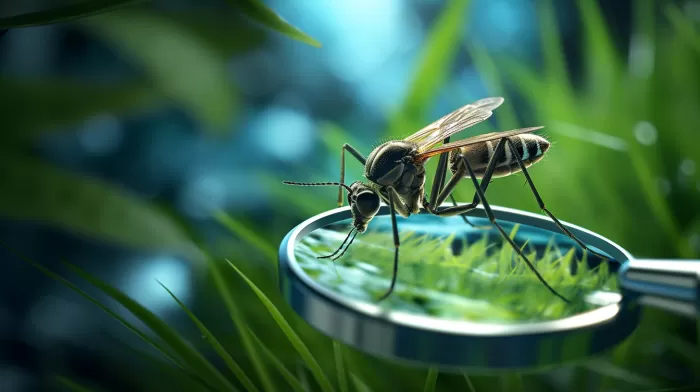You’ve probably heard about the controversies surrounding genetically modified (GM) crops and the potential dangers they pose to our ecosystems. The fact that organisms with unique and scientifically-engineered genetic combinations can pass on these traits to wildlife raises numerous concerns. But, hold on to your hats because GM insects are on the horizon, and the debate about their safety is even more intense.
The Battle Against Insect-Borne Diseases
In an attempt to control insect-borne diseases like malaria and dengue fever, scientists are now engineering GM insects. The hope is that these modified organisms will suppress and eventually eradicate the disease-spreading insect populations. However, with this cutting-edge technology comes even more uncertainty and potential risks.
Incomplete Knowledge About GM Insects
Researchers at the University of Minnesota are already working on a method to assess the potential environmental impacts of GM insects. Currently, there’s no reliable way to evaluate how safe these organisms are. Researcher Amy Morey underscores the urgency of understanding this new technology, saying, “You want to know what could happen when you release these novel organisms into the environment.”
The research at the University of Minnesota aims to create a framework on how to systematically evaluate new technology. They want to identify and examine all possible interactions that could occur with the environment. The potential for ecological consequences only becomes even more disconcerting when you consider that experts are far from understanding the complete role insects like mosquitoes play in the overall health of the planet.
Why Worry?
While mosquitoes may be irritating and spread diseases in many parts of the world, modifying their genetics could lead to unforeseen consequences. Although malaria and dengue are undeniably devastating to human health, what kind of fresh disaster might be unleashed if we tamper with the wild mosquito population without understanding the full extent of their role in ecosystems?
Case Study: GM Mosquitoes
A popular example is the Oxitec company’s GM mosquitoes. These engineered insects, called the OX513A, are males designed to carry a lethal gene. When they mate with wild female mosquitoes, their offspring inherit the lethal gene, which causes the offspring to die before reaching adulthood. The male OX513A mosquitoes do not bite or transmit diseases, and successful trials in Brazil, the Cayman Islands, Panama, and Malaysia have shown significant reductions in the wild Aedes aegypti mosquito population, responsible for diseases like dengue, yellow fever, and Zika1.
Despite these positive results, Oxitec’s GM mosquitoes have faced criticism. Environmentalists and other critics argue that the release of GM mosquitoes may lead to unforeseen consequences, such as the spread of other mosquito-borne diseases or the creation of hybrid wild mosquitoes more resistant to insecticides2.
The Fragile Balance of Ecosystems
Ecosystems are delicate, interconnected webs that can be easily disrupted by even the smallest change. Introducing GM insects could potentially alter delicate predator-prey relationships, food chains, and population dynamics.
For example, bats are natural predators of mosquitoes, and a significant decline in the mosquito population could lead to decreased food availability for them, causing a subsequent decline in their numbers. This knock-on effect could impact other species within the ecosystem, eventually leading to an overall imbalance.
In conclusion, while the development and potential benefits of GM insects are undoubtedly groundbreaking, we must tread carefully before blindly advancing this technology. Thorough research and comprehensive understanding of these organisms’ environmental impacts are crucial for ensuring that our pursuit of a solution to insect-borne diseases does not inadvertently create new ecological nightmares.



